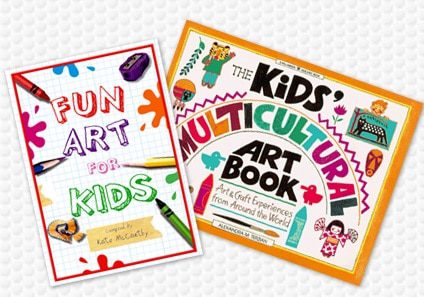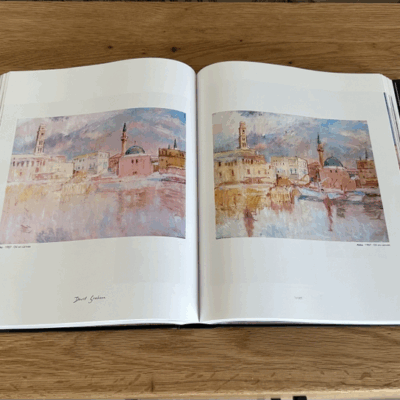All You Need to Understand About Binding Options for Your art book
Understanding the Process Behind High-Quality Art Book Printing for Art Fanatics
When it pertains to top quality art book printing, recognizing the ins and outs of the procedure can raise your gratitude for the last product. You could not recognize just how vital paper selection and ink options are to the vibrancy of artwork. Each component plays a considerable role in accomplishing the desired impact. As you discover the different parts of art book printing, you'll uncover understandings that could change your perspective on art conservation and discussion.
The Significance of Paper Option in Art Book Printing
When it comes to art book printing, the option of paper can make or damage the last item. You want your artwork to radiate, and the appropriate paper enhances shade vibrancy and information. Take into consideration elements like weight, structure, and coating; these components considerably impact exactly how visitors view your job.
For instance, a heavier stock communicates high quality and longevity, while a textured finish can add deepness to pictures. Smooth paper is exceptional for thorough recreations, permitting great lines and refined tones to show up crisp.
Do not ignore the paper's illumination; a brighter sheet can help colors pop, making your art much more distinctive. You'll additionally desire to think of just how the paper connects with inks and whether it can handle the printing process without deforming or bleed-through. Eventually, selecting the right paper sets the phase for your art, guaranteeing it records the target market's interest just as you imagined.
Selecting the Right Inks for Dynamic Reproductions
Picking the appropriate inks is equally as crucial as choosing quality paper to achieve lively reproductions in your art book. When you're printing art work, you desire colors that pop and properly stand for the original item. Choose inks with a high pigment focus; these have a tendency to create richer and more saturated shades.
You could think about making use of historical inks, which withstand fading in time, guaranteeing your art book stays as striking as the day it was published. If you're working with photographs or digitally developed art, pigment-based inks can supply a broader shade range, improving information and depth.
Do not ignore the finish! Matte and shiny inks can considerably alter the appearance of your art work, so think concerning the look you're aiming to attain - art book. Eventually, the appropriate ink choice matches your paper option, producing a spectacular aesthetic experience for your readers
The Function of Shade Management in Print Quality
Shade monitoring plays a vital duty in achieving high print high quality for your art book. It assures that the colors you see on your screen equate properly to the printed page. Without efficient shade monitoring, your vivid artworks may appear boring or altered, threatening your creative vision.
Next off, use shade profiles tailored for your printer and paper kind. These accounts lead the printer in reproducing colors accurately, reducing discrepancies between electronic and published variations.
When you prepare your documents, consider using a shade room like Adobe RGB or CMYK, relying on your printer's requirements. Constantly evidence your job, too; a test print can reveal any kind of possible shade problems before the final run. By prioritizing shade management, you protect the integrity of your art, ensuring your target market experiences it as you meant.

Understanding Various Binding Strategies
Attaining the best look for your art book exceeds color management; binding strategies additionally play a considerable role in its overall presentation and resilience. You have numerous choices to assess, each with its very own distinct characteristics.
If you're going for an expert feel, case binding uses a strong choice with a tough cover, excellent for showcasing your art work. On the other hand, excellent binding gives an adaptable spinal column while maintaining costs down, making it a prominent option for softcover books.
Spiral binding enables your art book to lay level, which is fantastic for presenting images without obstruction. Meanwhile, saddle stitching is excellent for smaller brochures, giving a clean coating without the mass.
Ultimately, the binding strategy you choose must mirror your artistic vision and how you want visitors to involve with your job. Ensure to weigh these options meticulously to accomplish the very best end result for your project.
The Impact of Print Size and Design on Presentation
While the option of print size and design might appear second to web content, they greatly influence how your artwork is perceived. The dimensions of your prints can either enhance or decrease the influence of your items. Bigger prints can attract visitors in, permitting them to value detailed information, while smaller sized layouts could call for even more intimate involvement.

Preservation Strategies for Resilient Art Books
To ensure your art books stand the examination of time, it's important to execute effective conservation methods. Beginning by keeping them in an awesome, completely dry atmosphere, far from direct sunshine and humidity. This protects against fading and warping, maintaining your pages undamaged. Use acid-free storage space boxes or protective sleeves to secure them from dust and physical damages.
When managing your publications, always clean your hands or wear cotton handwear covers to stay clear of oils and dirt moving onto the web pages. Avoid flexing or wrinkling the spines; rather, make use of book supports when displaying them.
For included defense, think about spending in archival-quality products for any repair services or improvements. Frequently examine your collection for indicators of wear or damage, attending to problems without delay. By complying with these straightforward strategies, you can ensure your art publications continue to be vibrant and available for many years to come, protecting their appeal and value for future generations.
Collaborating With Printers for Optimal Results
When you prepare to print your art book, selecting the ideal printer is essential to achieving your vision. Clear communication about your expectations and demands will help guarantee that both you and the printer are on the same page. Let's explore how to webpage make this collaboration as seamless and effective as feasible.
Picking the Right Printer

Effective Communication Approaches
Effective communication is crucial for turning your art book vision into truth, specifically when collaborating with printers. art book. Begin by plainly detailing your task's goals, including style components, recommended materials, and any certain printing strategies. Do not hesitate to share your inspirations and recommendations; this assists the printer recognize your aesthetic
Establish up normal check-ins to review progress and deal with any type of concerns. Usage visuals, like mock-ups or examples, to communicate your concepts better. Be open to feedback, as printers frequently have valuable insights that can check out here boost your task. Finally, maintain a positive relationship by being respectful and appreciative of their knowledge. This partnership will guarantee that your art book meets your expectations and beams in its last kind.
Regularly Asked Inquiries
What Are Typical Errors to Avoid in Art Book Printing?
When publishing your art book, prevent typical mistakes like bad resolution images, incorrect shade profiles, and neglecting web page design. Don't neglect to check and confirm information to verify your final item satisfies your assumptions.
Exactly How Does Digital Printing Differ From Conventional Printing Approaches?
Digital printing utilizes digital documents to produce prints straight, enabling quicker turn-around Full Article and personalization. On the other hand, standard approaches include physical plates, which can be time-consuming and much less flexible for tiny runs or distinct layouts.
What Is the Normal Turnaround Time for Art Book Printing?
The normal turnaround time for art book printing varies, yet you can expect it to take anywhere from a couple of weeks to a number of months. Factors like intricacy, amount, and printing technique all affect this timeline.
Can I Print a Minimal Edition Art Book Economically?
You can publish a limited version art book financially by choosing cost-efficient products, enhancing print runs, and making use of digital printing choices. Mindful planning and budgeting will aid you achieve high quality without spending beyond your means.
What Are the Environmental Considerations in Art Book Printing?
When taking into consideration art book printing, you should think of environment-friendly products, sustainable inks, and energy-efficient processes (art book). Selecting neighborhood printers can additionally decrease your carbon footprint, making your job both beautiful and environmentally accountable